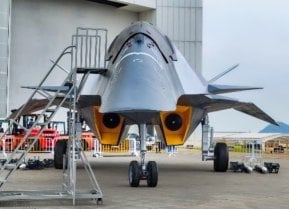The Slow Demise of the British Military Has Begun
The United Kingdom, the closest ally of the United States, is slashing its defense force with major cuts. Last week, the British Ministry of Defense announced major cuts to its defense force. The cuts include dozens of helicopters and four major surface warships.
The United Kingdom, the closest ally of the United States, is slashing its defense force with major cuts.
Last week, the British Ministry of Defense announced major cuts to its defense force. The cuts include dozens of helicopters and four major surface warships.
The cuts raise concerns about the capabilities of the British armed forces and their ability to assume a leading role in the defense of Europe in the event of a conflict with Russia.
Major Cuts Across the Pond
Although some of the defense cuts make sense in the sense of modernizing the force, the slashing of the Royal Navy’s two amphibious landing ships is concerning and will likely have a substantial effect on the British military’s amphibious warfare capabilities.
“So today, with full backing from our Service Chiefs, I can confirm that six outdated military capabilities will be taken out of service,” British Defence Secretary John Healey said in a statement.
According to the estimates of the U.K. Ministry of Defense, the cuts will save as much as $190 million over the next two years and $630 million over five years. The plan is to keep the money within the budget and reallocate the funds to other purposes.
“In this Statement, I have laid a WMS to outline the details of my decommissioning decisions. These include HMS Northumberland, a frigate with structural damage that makes her simply uneconomical to repair. 46 Watchkeeper Mk1s, a fourteen-year-old Army drone that technology has overtaken. HMS Albion and HMS Bulwark, landing ships both effectively retired by previous Ministers but superficially kept on the books for nine million pounds a year,” the British Minister of Defense said in a statement.
In addition to the cuts to the Royal Navy, the U.K. Ministry of Defense has decided to cut a lot of aviation assets, especially helicopters.
Specifically, the cuts include “Fourteen Chinooks, some over thirty-five years old, accelerated out of service. Two Wave Class tankers, neither of which have been to sea for years. And seventeen Puma helicopters, some with over fifty years’ flying, will not be extended,” Healy said.
For 2025, the U.K. expects to have a budget of around £57 billion, around $72 billion. In comparison, the United States military has a defense budget of around $825 billion.
“I recognize that these will mean a lot to many who’ve sailed and flown in them during their deployments around the world. They have provided a valuable capability over the years. But their work is done. We must look now to the future. All current personnel will be redeployed or retrained, no one will be made redundant,” the British Minister of Defense added.
The U.K. is the closest and most important ally of the U.S. In addition, the U.K. is a military power with regional and global force projection capabilities. Therefore, the country’s defense capabilities matter. Modernizing a military force is important. But there is a fine balance between cutting enough and cutting too much.
Stavros Atlamazoglou is a seasoned defense journalist specializing in special operations and a Hellenic Army veteran (national service with the 575th Marine Battalion and Army HQ). He holds a BA from Johns Hopkins University and an MA from the Johns Hopkins School of Advanced International Studies (SAIS). His work has been featured in Business Insider, Sandboxx, and SOFREP.
Image Credit: Creative Commons and/or Shutterstock.


